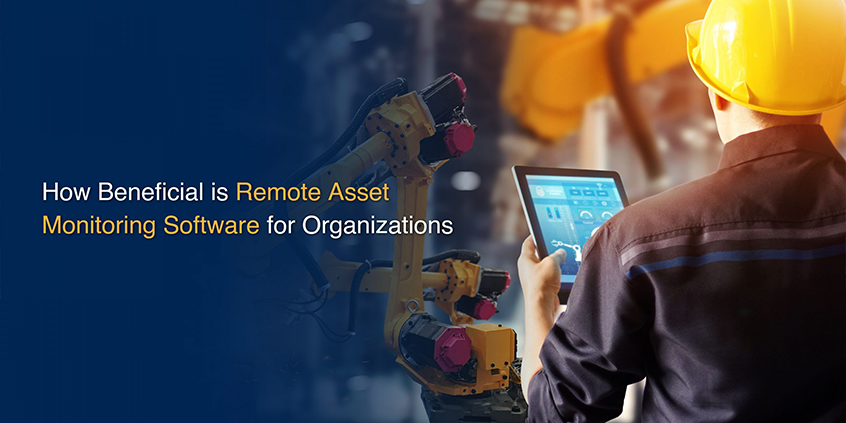IoT technology connects objects, environments, and processes to the internet. Globally, businesses, irrespective of their sizes, tend to harness IoT to make their devices and objects smart. IoT solutions are useful for bringing automation and transforming various industrial processes digitally. The adoption of IoT contributes to improving inventory and supply chain management. Here we are going to discuss the role of IoT in enterprise asset tracking.
When it comes to remote asset management solutions, IoT technology can offer several features including real-time inventory management, data privacy, supply chain transparency, and risk prevention along with asset tracking. All forward-looking companies that consider digital transformation as the right strategy for growth, cannot deny the benefits of IoT asset management solutions.
Let’s go through the key benefits of IoT solutions in asset management and monitoring.
Major IoT Benefits in Enterprise Asset Management and Tracking
IoT technology, along with 5G connectivity, AI, ML, and edge computing, remains a valuable asset for manufacturing and other core sectors. Though many companies have to define the strategy of technological stacks carefully while considering various options including use case identification, scalability, and business value enhancement. IoT implementation can streamline the asset management process while offering several benefits.
1. Promotes Proactive Approach
Manufacturers, entrepreneurs, and line managers can identify problem areas well in advance with the help of IoT-based predictive maintenance solutions. As a result, manufacturers can get rid of chaos and the risk of sudden breakdown of equipment. They can take a proactive approach to repair and servicing equipment.
2. Boosts Productivity
IoT remote asset monitoring solutions offer real-time visibility into asset utilization. It is also possible to get insights into load distribution and operation cycle times to enhance productivity with the help of agile IoT solutions.
3. Enhances Cost-efficiency
Whether it is a process of procurement or shop floor maintenance, supply chain management, or operational cycles, high-quality assets can always increase enhancement and improve your company’s workflow.
After looking at the benefits, let’s dig deep into some of the use cases of IoT asset management.
Use Cases of IoT in Remote Asset Management
The manufacturing sector undergoes the ‘Industry 4.0’ revolution these days. Disruptive technologies ensure the growth of this sector with the help of advanced sensors, drives, robotics, and actuators. Out of various industrial domains, asset management is one of the most prominent areas that influences the overall workflow and processes. Here are the remote asset management software-related use cases.
Improved Overall Equipment Effectiveness (OEE)
OEE is one of the most essential metrics to measure the efficiency of the plant. Failure or scheduled breakdown and maintenance activities influence the overall effectiveness of equipment. IoT in enterprise asset management can fetch real-time data directly from the equipment and make it possible to get inputs from OEMs for making informed decisions. What’s more, predictive maintenance in remote asset solutions can reduce maintenance costs by 30 to 35 percent.
In a way, IoT solutions can increase the availability of equipment.
Enhanced Performance Management
Improvement in uptime, utilization and asset availability can eventually reduce the operational cost. IoT technology assists entrepreneurs to make such a robust framework. Customized IoT in enterprise can effectively track assets and collect inputs around both operational and health parameters of different sub-systems.
This performance-related data can assist companies to achieve higher asset utilization and uptime using predictive maintenance and usage. Also, external parameters assist in the in-depth analysis of different patterns to drive strategic decisions. This could open more opportunities for equipment vendors and other stakeholders.
Advent of New Business Model
IoT in manufacturing and asset management will change the proportion of products and services in revenue from 80:20 to 60: 40. Prompt after-sales service and remote diagnosis of the equipment are considered as the need of the hour for modern enterprises. Manufacturers and industrialists have to deploy the right resources at the right time and leverage the benefits of IoT to fulfill both these challenges effectively.
Manufacturers can also foray into outcome-enabled server models by leveraging the operational data metrics and IoT solutions. They can ensure better performance of equipment. They can also offer models based on rentals instead of selling. Also, the asset management department in the company can use the feedback from its quality assurance team and take corrective measures as and when necessary. It further reduces the development time and cost while increasing productivity.
Also Read- Manufacturing 4.0- Role of IoT in Reshaping Core Processes in 2022
Concluding Lines
In a nutshell, an IoT-based asset tracking solution offers effective management and monitoring of remote assets. It can increase the company’s operational efficiency and promote the innovation of business models. It is interesting to see how IoT in enterprise asset management will take enterprises to a new level by managing assets and increasing productivity.
Rejig Digital provides a robust remote asset tracking based on IoT technology. We assist various companies across different industry sectors to leverage the benefits of advancements of IoT and other emerging technologies.





